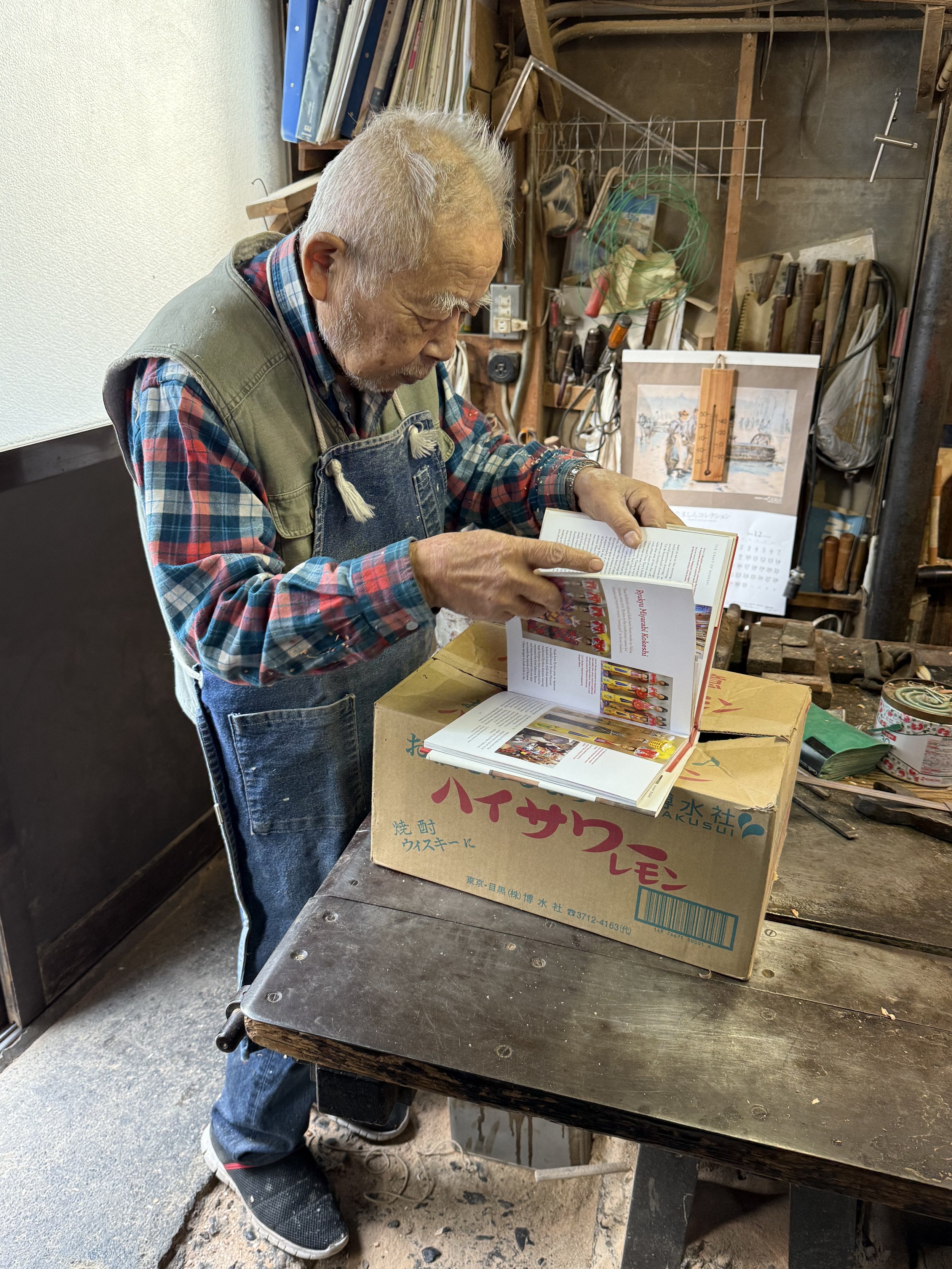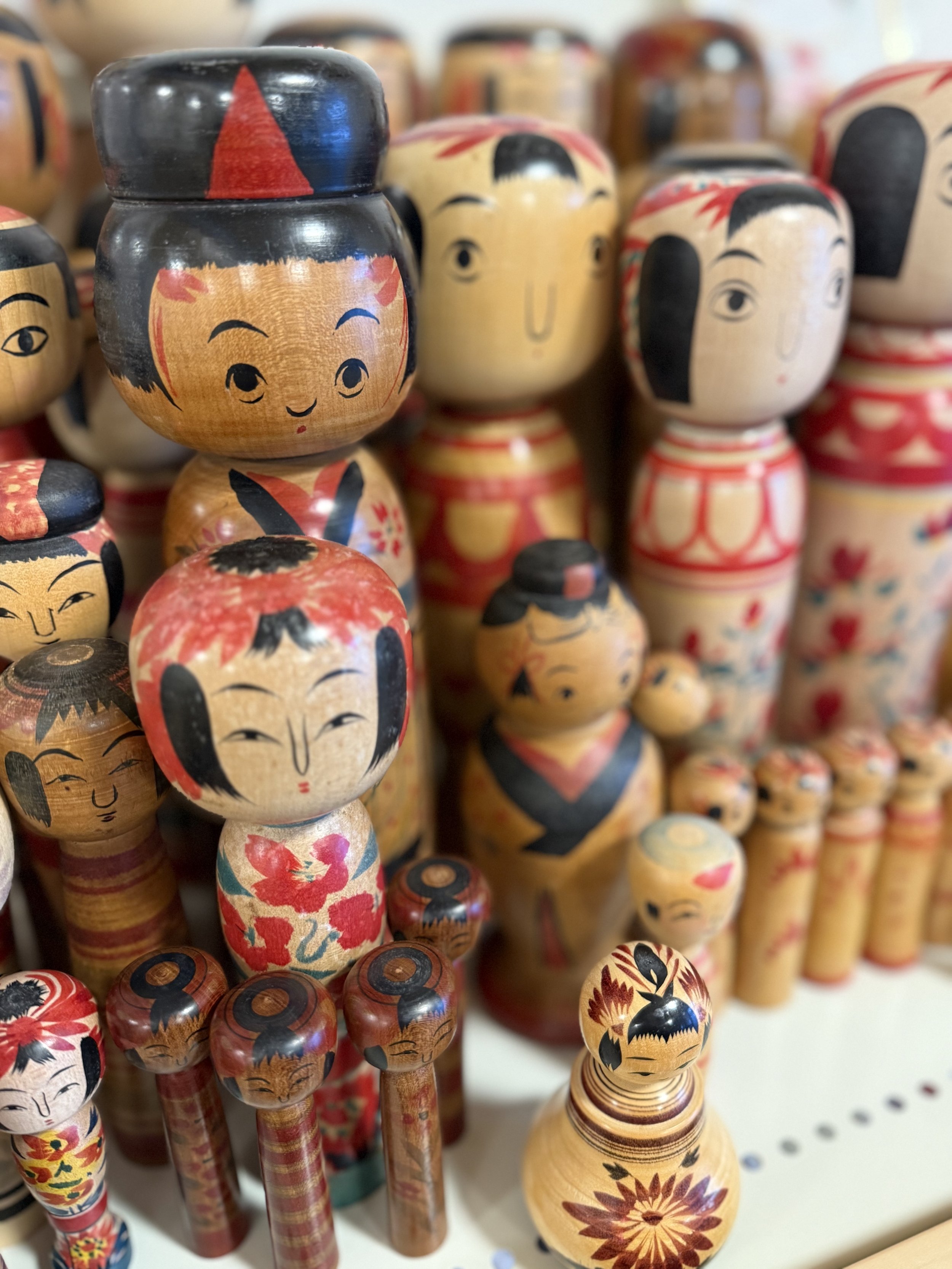Okura-san: A Kokeshi Master
Okura-san is the only Kokeshi maker in Tokyo. At 80 years old, he stands just shy of five feet, but his facility with the lathe is monumental. Okura-san is a fifth generation carpenter, but five decades ago, he became the first of his family to start making these wooden dolls. His wife paints them. Together, they have created a Kokeshi line that is unique in both form and style.
Throughout Japan, Kokeshi have had a complicated history. It is rumored that they were first created in the early 18th century as toys for children. Their earliest incarnations were made of fabric and wooden spools and were sometimes formed to appear as though they were crawling. But over time, they have evolved into a distinctly smooth wooden upright cylindrical shape, often adorned in patterns of red paint to represent good fortune. Just like their shape, the Kokeshi’s function has changed over time too. From playthings to protectors, today Kokeshi are mostly associated with providing guardianship to the lost souls of children. For this reason for many Japanese, they are revered and occasionally feared for their link to a world beyond.
On a cold winter morning in Okura-san’s Hachioji studio, the octogenarian and his wife hosted a collection of curious foreigners as well as an equally curious local television crew to witness the creation of some of his Kokeshi. His studio, the first of three wooden structures abutting each other, is an unassuming edifice lined with stacks of Hinoki blocks, misshapen boxes, and handcrafted tools blanketed in decades of dust. A chill runs through the space as the master, clothed in layers of flannel and wool under a denim apron, greets his guests with a warm smile and wrinkle-framed eyes.
In recent years, some people, mostly foreigners, have started to collect these dolls as souvenirs from their Nippon travels as well as art pieces and historic artifacts. Scouring shrine sales and flea markets, these enthusiasts have spurred a type of renaissance for these wooden dolls, each one a handcrafted individual with a story to tell. Frequently, these dolls hail from onsen towns with scenes from these locales depicted on their painted garments or they have familiar floral patterns in shiny shades of red.
Traditional Kokeshi from Tsuchiya Onsen.
His eager audience stood at joyful attention as he pinned the block of Hinoki wood in place, adjusted the lathe, started the motor, grasped his chisel and got to work. Chips of wood burst in the air getting longer and thinner as the woodblock got smoother and smoother. Gripping the sandpaper, he continued to shape and shift the rough block into an artful icon of Japanese culture. In just four minutes, he had created the perfect pint-sized Kokeshi.
Okura-san’s creations deviate from the traditional style. His signature Kokeshi are often a little rounder and frequently adorned with large brimmed hats reminiscent of Edo royalty. But the most significant hallmark of his creations is the single and double necklaces that loop and spin around his Kokeshi’s narrow necks making them at once dynamic and playful and distinct. Once carved and sanded smooth, the Kokeshi are passed to his wife’s painterly hands to create simple odes to nature’s gifts in the form of chrysanthemums, wisteria and maple leaves in a rainbow of hues.
One of the great blessings of living in Japan is being able to discover so many traditional crafts, learn about their rich histories and sometimes, when you are really lucky, meet a master in the flesh. Our visit to Okura-san’s humble workshop was such a gift. Like his incredible work, his charming sense of humor and hospitality, left us inspired to learn more, create more and connect more. Sounds like a recipe for joy!













